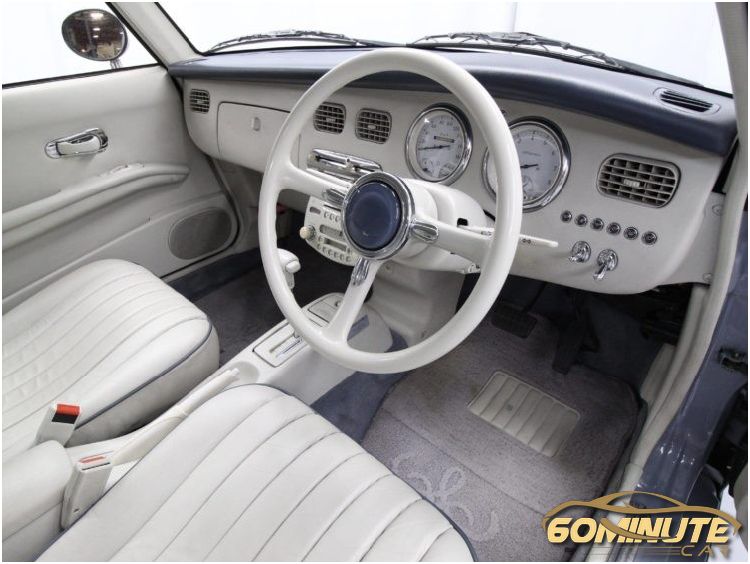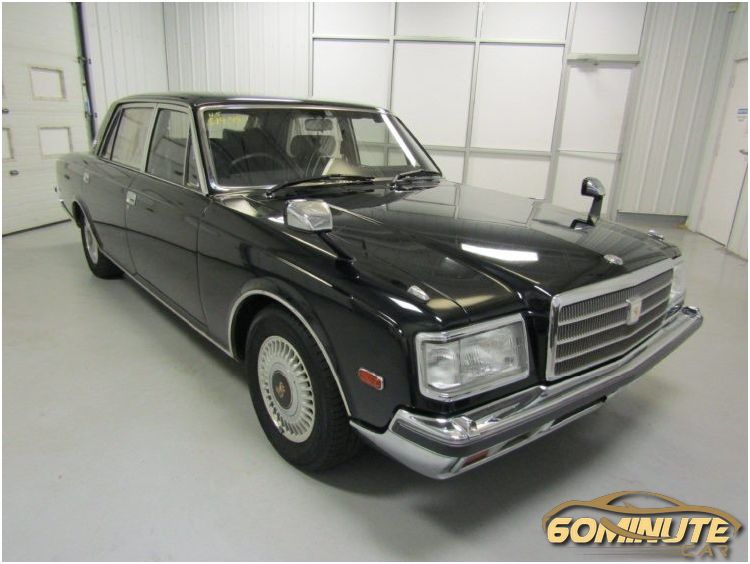What’s up with the Subaru head gasket problem
Looking at buying a Subaru? Make sure you’re aware of the Subaru head gasket issue.
Subaru is a Japanese automobile manufacturer founded in 1953. They are the 22nd largest automaker by production. They are well known for their boxer engines in larger cars. However, concerns have been raised about the frequency of gasket failure in their cars, with some people needing to replace the head gasket as soon as 90,000 miles to avoid head gasket failure.
What is a head gasket?
A head gasket is a thin strip of metal with holes in it. It sits between the engine block and cylinder heads in a combustion engine. It sits there to avoid coolant and oil leakage in the cylinders by sealing and compressing the cylinders. If it fails, it is important to replace the head gasket immediately to avoid issues such as coolant leak, gasket failure and damaging of essential auto components. Cylinder head materials such as iron are much more effective than materials like aluminum.
Which car models are affected?
Models that experience high rates of failure include:
- Subaru Forester, 1999 to 2010
- Impreza, 1999 to 2011
- Legacy, 2000 to 2009
- Outback, 2000 to 2009
- Baja, 2003 to 2005
Most affected models were developed in 1997-2000, which means the issue is less prominent in newer Subaru cars, as the engine design has been modified and improved over the years. The Subaru Outback engine was completely redesigned in 2012, which should mean that while older Outback’s are a hit or miss, the new ones should be fine to drive.
Why are so many models affected?
One defining feature of the Subaru autos is the boxer engine, which has horizontal cylinders and the engine lays flat. The horizontal motion of the pistons is how this engine got its name. This has multiple benefits, including better handling and balance, because it’s lower to the ground, but it can cause constant pressure on the gasket and built up carbon deposits at the bottom of the gasket.
The reason this issue is mainly in models developed around 1999 is because of the materials used. A composite model, involving a multi layer steel shim, allowed coolant leak into the combustion engine.
What has Subaru done to fix this issue?
Subaru has yet to fully stop the issue, but the rate of head gasket failure is lower among newer models. This also means lower rates of Subaru head gasket replacements. This could, of course, be due to the fact that older car models have more mileage, and because of that, more chance of head gasket and associated problems. This doesn’t seem to be the case though, as Subaru has tried multiple times since 1999 to fix the issue. 1999 was the worst year for these issues, with significant improvement by 2002 on internal leakage, but external leakage was still common. Models from 2009-2012 should also be significantly safer, due to multi layer cylinder heads. The Subaru engine was rumored to be completely redesigned in the 2012, which will hopefully eliminate all issues. Of course, this will be something we won’t have proof of for some time, as it takes time for mileage to increase on cars.
Will Subaru pay for repairs?
Unfortunately, probably not. First, there’s no recall on the faulty engines, as recalls from the manufacturer are voluntary, unless the fault poses serious danger or excessive emissions. A head gasket failure isn’t immediately dangerous, nor does it increase emissions.
Secondly, most failures occur between 80,000 and 100,000 miles. The Subaru warranty is 3 years, or 36,000 miles, which, that early on, is very unlikely to require replacing.
This means that drivers of old Subaru models, like the Subaru Forester are likely on their own when it comes to covering the costs of a faulty head gasket. Which is why it’s important to know and be able to recognize the signs of a head gasket problem early on.
The signs your head gasket is blown
It’s important to know the signs of a head gasket problem, so it can be remedied before further damage happens to your car, increasing costs of repairment. Signs include:
- The engine overheating (can be checked by looking at the temperature gauge)
- Bubbles and sulfur-like smells in the cooling system.
- Milky white oil in the combustion chamber
- Oil dripping around the block in the engine
- Lowered coolant levels due to coolant leak
Why is it bad for the gasket to need regular fixing?
Fixing the head gasket after it fails is expensive and time consuming. It could take hours for a qualified mechanic to replace, as well as check other important aspects of the car, including the combustion chamber, timing belt, water pump and manual transmission weren’t damaged as well. This puts you out of a car for what could be multiple days. Not to mention the costs of replacing the head gasket.
A trip to your local mechanic could put you out of a few thousand dollars, even more if you visit a dealership. A lot of people can’t afford to lose a couple thousand dollars due to a Subaru head gasket problem. But if they keep proper maintenance and monitoring of the head gasket and temperature gauge, issues can be avoided.
Is there a solution?
Don’t buy a Subaru and if you have one, maintenance and regular checks will help early detection of any issues.
Of course, other manufacturer’s automobiles can have head gasket problems. Likewise, not every Subaru will have issues, but the rates are much higher in Subaru models and should be avoided if the model has a history of issues.
If you have a susceptible model, proper maintenance and early detection of head gasket issues will prevent any issues from becoming serious.
Remember to change the oil regularly, check the coolant levels and replace when necessary, check for leakage or strange smells anywhere and take your car in for maintenance when needed.
Being well informed is the best way to keep your car healthy, stay read up on car maintenance or ask your local dealership any questions.
Hey, my name is then, and I used to work at the biggest dealership in the country. And now I teach people and find folks like yourself how not to get F•••ed when buying that car. Now in this video. Well, let’s talk about Subarus and my passionate hate for them and why you should stay away from them unless you have a money tree. So I want to start off with this absolutely amazing article that I found. It’s called The Truth About Subaru’s Head Gasket Problems.
And the first three words in the article are Subarus are amazing. That’s like me inviting you to venues. A-well-a, for vacation. Except if you don’t get robbed, killed, raped, have your organs stolen, poisoned, die of starvation or diarrhea or simply get bitten by a deadly mosquito. Venezuela is great if you’re Subaru doesn’t blow a head gasket at 60, 70 or 80 or 90 thousand miles, Subarus are great unless you’re prepared to pay three or more thousand dollars for head gaskets replacement every 80 to 90 thousand miles. Subarus are great now. Subaru engine has two problems. First, it’s the design. And second, that design of the actual cylinder is something to talk about cylinders first, so you have a cylinder in the regular car like this. It’s a in line or V configuration in Subaru. It’s a boxer engine that cylinders are horizontal. That means pistons are moving like this and that’s why it’s called the boxer because it looks like you’re boxing or the engine is boxing. So. She is the biggest problem with their engine closed deck, semi-closed deck and open deck, sonna closed deck. There is the cylinder and it’s connected on many, many, many points around the sounder to the wall of the engine. In a semi-closed deck, you remove these connections and you put. Coolant in there, so the cylinder is getting cooled and it functions better in the open deck.
You remove even more connections and you put even more coolant in there. And here’s the coolest part, because you remove connections with immense pressure with the very high speed of the piston going upward and out or in this case horizontally, in and outwards and thermal expansion and cooling once the engine is off, especially in wintertime. Head gaskets are getting eroded by coolant that’s leaking in there. This wouldn’t be a problem if the engine and the cylinders were vertical like this. Not like this. So this is one of the problems with the engine. A second problem with the engine is I’m going to let an independent mechanic tell you about it because he’s actually working on this engine. And I found this video online. I don’t know the guy we’re not affiliated or anything like that. He just making videos about repairing cars. So he’s working in a Subaru engine and he’s going to talk about what the problem is, how much it’s going to be to fix it and how long it’s going to take to fix it. So if you have a Subaru or if you’re thinking about buying a Subaru or if your Subaru is coming up to over 17000 miles, this is definitely for you.
Good morning. I’m sorry. Reisman And we’re here to talk about common Subaru head gasket failures this morning. Sitting in front of me is an E J. Twenty five commonly found in most every Subaru sold in North America. We currently have this engine halfway disassembled. One cylinder head is still on the vehicle and the other has been removed.
We can show this common failure over on the side of the engine where the head gasket physically sits on to the block because this is a horizontally opposed engine and the cylinder sticks sideways. There’s constant pressure through the coolant jacket right on this ridge against the gasket itself. And this is where they’ll commonly fail. If we look closely on this inner edge, we can actually see built up carbon deposits right here on this lower edge that end as they go further up. This cylinder head gas, it was leaking directly on number three. No one had just barely begun to wear at the bottom of the gasket itself and hadn’t leaked yet.
As a result, he physically disassembled the engine, removed the cylinder heads from it, and then sent him directly to a machinist to have them checked to make sure that within ten thousand of an inch of specification before we attempted to reseal the system and reassemble the engine before placing it back into the vehicle and getting it back on the road.
These are the pieces and parts of the sheet that needed to be disassembled in order for the engine to be removed.
That in and of itself is about a four to five hour task. Then to disassemble the engine is another six hour labor job. In this case, total time involved of the vehicle to disassemble repair reassemble is 20 to 24 labor hours.
Oftentimes in these situations, it doesn’t necessarily cost justified repair the vehicle. In the case of this 0 4 Subaru Forester, the vehicle has a value of about fifty five hundred dollars for repairs into it cost about three thousand dollars and the repairs take two to three weeks. Does it justify the cost of the repairs? In my personal opinion, I inform our client that it’s really on the fence is borderline as to whether or not it’s worth their time invested interest.
Did that video make any sense? All right. Now, let’s let’s dive into this amazing post that I found on Forum. This guy has a 2007 Subaru Outback with hundred and fifty thousand miles that needs second head gasket replacement. Not the first one. Second one. How many Hondas? Toyota’s Nissans, Fords, Shelby’s Dodge’s. Do you know that? Need a second head gasket replacement? Hundred fifty thousand miles. Typically, that’s when you do your first head gasket replacement on Subaru. That’s your second one. It could be a third one in some cases. So it blows my mind that this guy didn’t learn a lesson in first eighty five thousand miles. He kept the car. Now he’s doing it again. Now look at the prices. He’s going to independent mechanics. He’s not even going to the most expensive place to fix the car, which is a dealership. He’s going to expensive, inexpensive mechanics. And he is get a charge between thirty two and thirty five hundred dollars. Now, some people may say that this problem is only plaguing Subaru’s from 1999 to 2010 or 2011. Really? So this problem magically disappeared. The agents stayed the same. They tweak couple of things here and there. But no, no, no amount of catch up on the S••• sandwich is going to make it a hamburger. They changed it like 1 percent of the engine. And they’re expected to get a different result. It’s still a boxer engine.
The gravities still affects it the same way. There is still this S••• semi-closed or open deck design, which makes the cylinders move and tolerances get F•••ed up very quickly, and if you know anything about engineering tolerances, if you’re off by 30 seconds of an inch, that’s like that’s like nail thickness. If you’re off that much in the engine. The engine is F•••ed. I mean, it is. Absolutely. It’s gone. So how is Subaru planning to fix this problem with wood with not replacing the engine? The whole engine is F•••ed. No other reputable car manufacturer is using this engine. Porsche is using this engine, but the only reason they’re using the engines because they have one hundred fifty thousand dollar car would bunch of wannabes that can afford. To replace an engine for 50 or 60 thousand dollars or do a head gasket job that’s going to cost them twenty or thirty thousand dollars. Yeah. That’s the prices you get with Porsche. I was just curious, how many cars did Subaru sell in the last 18 years from 2000 to 2018? Looks like it. It was five point eight million cars. There’s actually two Web sites where you can find this information and both Web sites are within like 20 cars from each other. So the numbers are very credible. So I did the math. I added all these numbers up and then decided to do some more math because why not? Let’s say that only 80 percent of the cars had a problem in real world.
It’s about ninety five to ninety eight percent of cars that are having this issue. And the other 3 percent are just lucky. I don’t know, maybe they got some fairy dust on them. That doesn’t make them blow their head gaskets at eighty thousand miles. Let’s say only 80 percent of these cars are F•••ed up. OK. That’s going to be four point six million cars. Now, let’s say only half of those cars are going to get taken to the shop. Wish it would. The dealership shop, let’s say half of the other cars are going to get fixed anywhere else. Let’s say Subaru is going to make only 50 percent of the money that there is to be made from this head gasket is being blown up. That’s 2.3 million cars, 2.3 million times three thousand dollars for each head gasket job. I’m not even counting extra repairs that will have to be done. This is just the head gasket job replacement. Three thousand multiplied by two point three million. That’s seven billion. Twenty two million four hundred sixty two thousand four hundred dollars. I mean, that literally had to. That is that is a huge number. That’s how much money a Subaru has made in the last 18 years from head gaskets. And that’s considering that head gaskets needed to be replaced only once.
Imagine if somebody like 10 or 20 percent of people go in there for a second head gasket replacement. How much money are they making a S••• ton of money? Why would Subaru replace their S••• engine? They had this problem for 30 years, 30 years. They haven’t fixed this problem in the last 30 years. Why would they fix it now? Why would Subaru fix this now? And that is why I absolutely hate Subaru. And in my opinion, it is one of the worst cars that you can buy because it is designed to fail. Many car manufacturers had S••• engines, S••• transmissions like car manufacturers make mistakes. OK. Once you’re moving forward in a direction like an engineering direction that nobody has gone before. You’re going to F••• up. That’s that’s the that’s just gonna happen. OK. But once you create a ship product and sell it for 30 years. And you’re refusing to fix it. And that just tells me that’s. This is on purpose and is just enjoying the money that they’re making off of it. That’s it. So. I think I’m done here. If you’re still thinking about buying Subaru, I don’t think any amount of prayers are going to help, so I’m not even going to try. But this is Dan with 60 Minutes car signing out and they’ll see you on the Internet.





